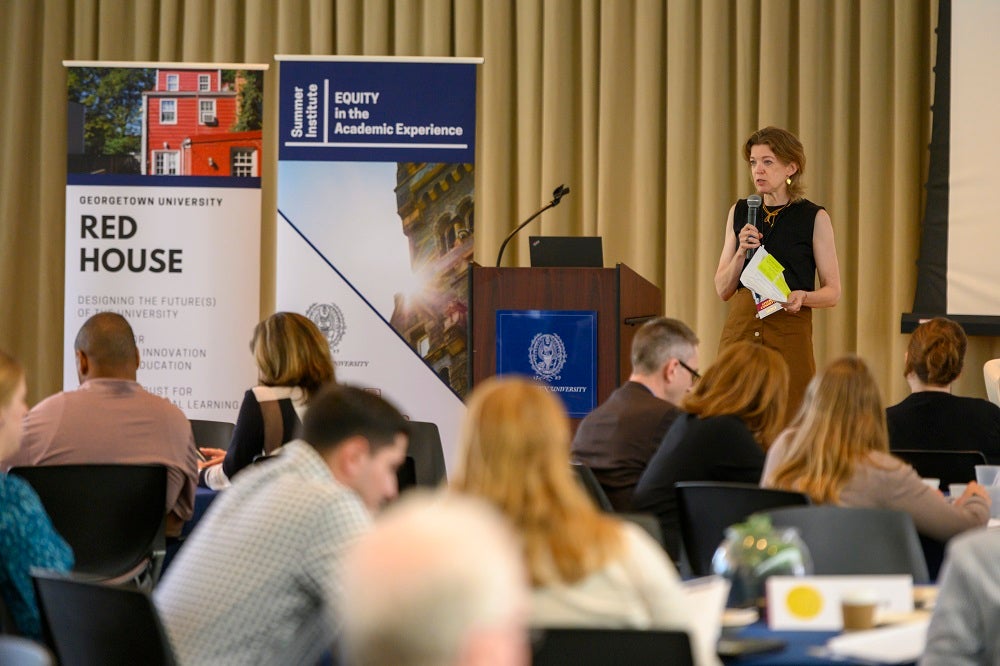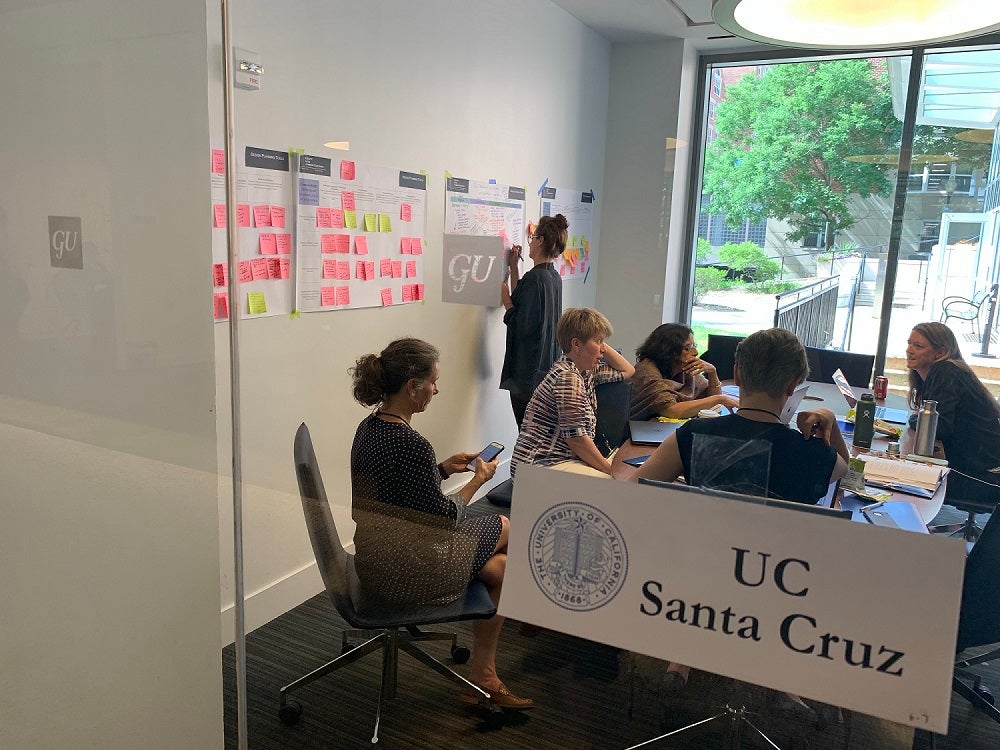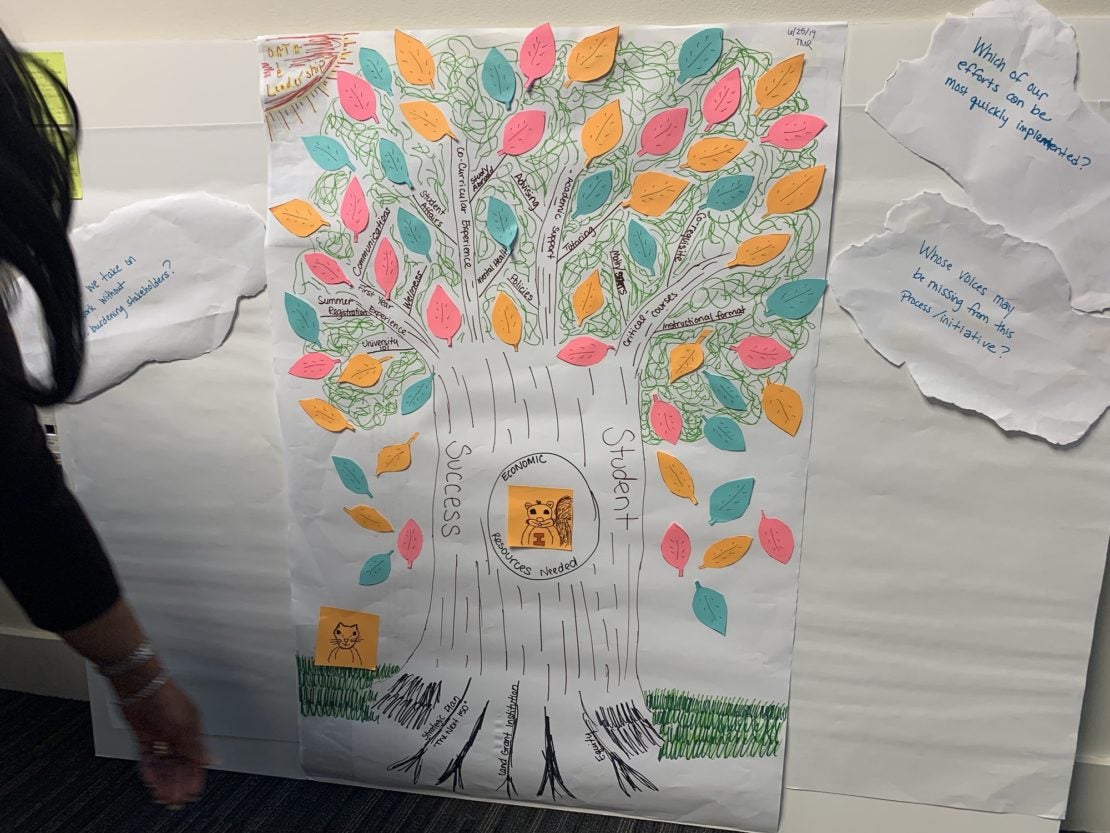Teams from 18 colleges and universities from across the country convened at Georgetown University this week for the first annual Summer Institute on Equity in the Academic Experience. Hosted by Georgetown and The University of Texas at Austin through the American Talent Initiative, the institute provided the teams—composed of people working to implement initiatives to increase successful outcomes for low-income, first-generation, and underrepresented students at their institutions—an opportunity to focus on their individual projects while also learning from each other and experts in the field.
“It’s a moral imperative for us to do this work,” said Professor Heidi Elmendorf, senior advisor to the president for equity in education at Georgetown University, and co-director of the institute. “Universities and colleges tend to evolve rather slowly while the world around us changes rather rapidly.”

‘Talent is equally distributed, but opportunity is not’
The three-day institute comprised guest speaker presentations over breakfast and lunch, concentrated deep work time for each institutional team, and moderated inter-team problem sessions to discuss national issues in the field of access and affordability. The institute fostered a sense of community by connecting participants through a dinner and three receptions. All participants were also invited to contribute to a community Wiki environment with a digital library and resource kit.
“It is vital that we all think about the ways in which talent is equally distributed, but opportunity is not,” said Maurie McInnis, executive vice president and provost at UT-Austin, who was a panelist. “If we want our nation to remain a vital place, we need to be sure that we are giving the talent there the opportunity to succeed. Collectively, as institutions of higher education, we can work to make that possible.”
Cross-team problem sessions delved into topics such as how to develop a vision for equity, define and measure equity, structure the work for tackling equity, and scale and sustain the equity agenda. Questions from participants included:
- How do we rethink our approach to teaching and coursework to promote inclusivity in our STEM student populations?
- How do we leverage data for insights and action on equity?
- How do we ease transfer students’ transitions?
- How do we increase students’ sense of belonging through peer support systems like cohort models?
- How do we engage professors to serve as personal mentors?
- How do we make the case for funding to provosts and presidents?
- How do we improve student wellness?
A time to focus
Many participants lauded the institute for providing the space to gather without distractions as teams.

”Having the space to just be together and really focus and home in on our core questions in a way that is structured by a third party is incredibly helpful,” said Marc Lo, executive director of the University of Pennsylvania’s Penn First Plus program, which supports first-generation students and students with substantial financial need.
“To have the time and space to engage in this high-level thinking was really quite a gift,” said Patricia Marten DiBartolo, associate dean of the faculty and dean for academic development at Smith College. “To elevate this work is really hard, and sometimes it can feel discouraging. So to connect with other people who are similarly interested in tackling these tricky issues was really edifying.”

Participants leave with next steps percolating
To conclude the institute, every team created a poster to illustrate their post-institute plans, and presented these roadmaps for progress to their peers for feedback.
The University of Illinois is kicking off a student success initiative in September, and Kathy Martensen, assistant provost for educational programs at the University of Illinois, said she plans to use lessons from the institute in her presentations to campus stakeholders.

Meanwhile, Princeton University is in the early stages of solution design, according to Jon Fickenscher, associate research scholar in the Department of Mathematics at Princeton University. “We have an online module that is designed to give incoming students the tools and the information to make decisions about where they can place themselves in our [math] programs,” he said.
The institute also generated or advanced some collaborations between participating schools. Courtney McAnuff, vice chancellor for enrollment management at Rutgers University, said Rutgers hopes to collaborate with the University of Pittsburgh and the University of Chicago on promoting women in STEM, noting that the institute was his first opportunity to interact in person with teams from those schools.
‘Committing to doing better’
Participants appreciated the progress fostered by the institute, while underscoring the significant amount of work to be done.
“We say lots of glorious statements about the importance of equity, but I see in the work of my colleagues here actual action, and that is so refreshing,” said Cassandre Giguere Alvarado, executive director of student success initiatives at UT Austin. “To be in a space where we’ve said we’re gonna say some tough things, we’re gonna reveal some truths about our campuses that we’re not necessarily proud of, but we’re doing so in the spirit of committing to doing better, I think that’s what’s really encouraging about this work.”